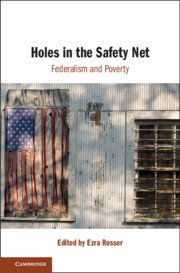Josh Gupta-Kagan, Distinguishing Family Poverty from Child Neglect, Iowa L. Rev. May 15, 2023. Abstract Below:
Family courts and child protective services (CPS) agencies surveil, regulate, and separate hundreds of thousands of families for neglect annually. These families are overwhelmingly poor, and the history of this legal system reveals an expectation, if not an intention, to intervene in poor families. This raises the question whether family courts and CPS agencies are “confusing poverty and neglect” or if they intervene for more than “just poverty,” as a raging debate in the field is framed.
The law fails to help resolve this debate. Instead of distinguishing poverty from neglect, or providing nuanced examinations of what social science has long shown to be a complex relationship between poverty and neglect, the law assumes away the problem. The law asserts that neglect and poverty are distinct, so the legal system’s decision to label parental behavior as neglectful frames the case as about some parental fault or pathology and not about poverty. Consistent with that frame, the law has separated anti-poverty financial supports from interventions available in neglect cases, so neglect interventions largely avoid providing such supports, even though much empirical evidence shows they can reduce family court and CPS system involvement. Moreover, family court and CPS agency intervention can trigger a variety of steps which make poor parents poorer, undermining their ability to reunify with their children.
This Article identifies a range of changes which would improve the legal system’s ability to distinguish poverty from neglect, by both eradicating long-standing legal rules which confuse poverty and neglect, and establishing more radical rules that would reverse the historical division between neglect cases and anti-poverty financial supports. These proposals recognize how deeply intertwined poverty and neglect are currently, and the absence of any easy test to determine which families could stay safely together if they were not poor and which could not. Absent such a test, the best solution is to provide families the income or the supports that would replicate the experience of families who are not poor.





